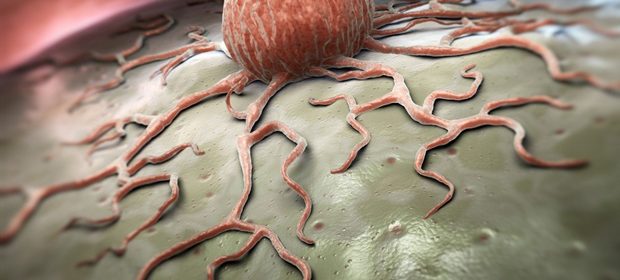Types of Acquired Digital Fibrokeratoma

Acquired digital fibrokeratoma (ADFK) is a benign tumor typically seen on the fingers and toes. It is an uncommon condition most often seen in middle-aged people. The tumors are usually dome-shaped, but can also look like elongated projections in some cases of ADFK. ADFK lesions are usually isolated, but rarely can be associated with other tumors.
While the exact cause of ADFK growth is not clear, it is thought to be a result of trauma or injury to the fingers or toes. Digital fibrokeratoma is sometimes associated with complications including ulceration of outer skin, which can cause infection. Some large ADFK tumors can also cause pain.
Presentation of ADFK lesions
ADFK lesions look like fibrous projections on the skin surface. They are flesh colored or pink in appearance. There is a collar of scaly skin around the base of the projection, which plays a crucial role in the diagnosis of ADFK. The outer skin of the lesion is usually thickened.
ADFK tumors are typically small in size – less than a centimeter. Rare cases of ADFK with tumor sizes over 1 cm have been reported and they have been named giant ADFKs.
Types
The dermal core of an ADFK tumor matches one of 3 types of histological patterns. All ADFK types have a highly hyperkeratotic stratum corneum. Bart et al. described these patterns for the first time and Kint et al. characterized them further. Based on the clinical and histological features exhibited by the tumor, ADFK is classified into 3 types – Type I, Type II, and Type III.
- Type I
A Type I ADFK lesion is dome-shaped and has a dermal core that is made up of thick, intertwined bundles of collagen. The bundles are typically oriented along the lesion’s vertical axis. There are numerous capillaries, thin elastic fibers, and fibroblasts between the bundles of collagen. This is the most common type of ADFK.
- Type II
Type II ADFK lesions are less common. While they resemble type I tumors histologically, they are typically tall and also have a considerably higher number of fibroblasts and fewer elastic fibers. The fibroblasts in type II ADFK are arranged as bundles, or fascicles.
- Type III
Type III ADFK is very rare and the tumors are fluid filled and have fewer elastic fibers. These lesions can be flat to dome-shaped. These type of tumors resemble type II tumors in terms of histopathological findings.
Diagnosis
ADFK lesions are often mistaken for any other similar conditions such as supernumerary digits, aggressive digital papillary adenocarcinoma, warts, periungual fibromas, and cutaneous horn.
Biopsy is generally performed to confirm diagnosis. The histological pattern differences between various types of ADFK need to be thoroughly studied before confirming the type of ADFK.
References
- A Case of Acquired Giant Digital Fibrokeratoma, http://www.avensonline.org/wp-content/uploads/JCID-2373-1044-04-0033.pdf
- Giant fibrokeratoma, a rare soft tissue tumor presenting like an accessory digit, a case report and review of literature,https://www.ncbi.nlm.nih.gov/pmc/articles/PMC4430176/
- Acquired Digital Fibrokeratoma, http://misc.medscape.com/pi/iphone/medscapeapp/html/A1055825-business.html
- Medscape, Acquired Digital Keratoma, http://emedicine.medscape.com/article/1055825-overview
Further Reading
- All Digital Fibrokeratoma Content
- Acquired Digital Fibrokeratoma (ADFK)
Last Updated: Feb 26, 2019

Written by
Susha Cheriyedath
Susha has a Bachelor of Science (B.Sc.) degree in Chemistry and Master of Science (M.Sc) degree in Biochemistry from the University of Calicut, India. She always had a keen interest in medical and health science. As part of her masters degree, she specialized in Biochemistry, with an emphasis on Microbiology, Physiology, Biotechnology, and Nutrition. In her spare time, she loves to cook up a storm in the kitchen with her super-messy baking experiments.
Source: Read Full Article